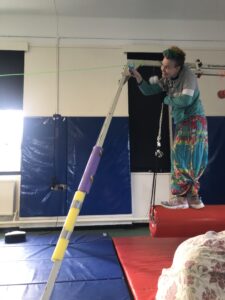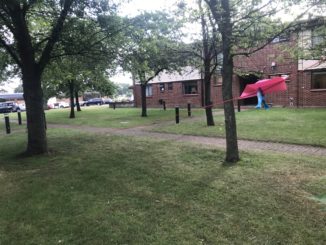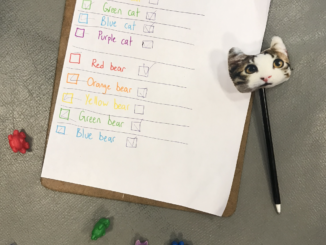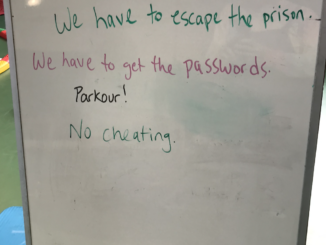
A delightful little example of risky play in action. There are a few different opportunities for kids to play with height in my rooms. This was a really fun, creative one that also worked on hand strengthening, visual tracking, and lots of other great things that children need foundationally before they can hand write well.
I had a zipline for clips at my sensory summer camp and I repeated it in my room. (An idea I wholly stole from Listen to the Children!) I have a little container of towel clips and a long piece of cord. I fastened one end of it up high and one end of it down low.
At summer camp it was going from tree to tree and the kids could stand up on a chair to clip clips to it and let them zoom down. In my room, with a ratio of one me to one big kid at a time, I felt confident doing an even “riskier” version: the kids stand on the bolster swing in order to reach the clip line.
This requires balance to stay put, core strength to stabilize your body while you reach out for the clip line, crossing midline for my right handed kids to reach out to the clip line across their body, hand and finger strength to squeeze the clip to open it, visual-motor coordination to get the clip to the line, visual tracking to let go of the clip and watch it zoom down the line. It gives alerting irregular vestibular sensory input to deal with staying balanced while holding on, and a sense of accomplishment, thrill, and risk which encourages slowing down in order to do it safely and encourages listening to their body in order to manage all these things at once.
When we had zoomed tons of clips down the line we started also experimenting with making paper airplanes and clipping them to the line, too, which was a whole other set of fun. This was really great for my 7-9 year old kid range.



